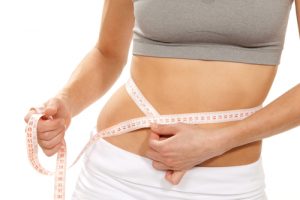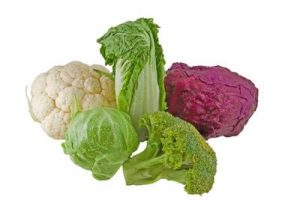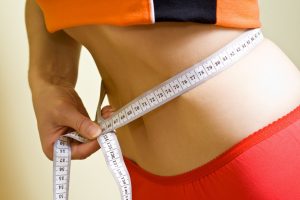One common concern among dieters is the fat accumulated around the belly, waist and bum. It is obvious that the weight loss world has hundreds of solutions for you to tackle the belly fat issue. In this article I have collected 7 truths and myths about belly fat.
Belly Fat Myths and truths explained
1. There are specific foods that burn belly fat.
There is no or very little scientific evidence to show that there is a specific food or supplement which will cause weight loss in general let alone in specific areas. To my knowledge research supports that green tea and dietary calcium (through foods not supplemented) can help in increasing weight loss. For everything else there may be some theories, very little, poor or no evidence at all that they increase weight loss. For those supplements which could increase weight loss but are deemed unsafe I will put them in the same category.
If you lose weight, you will lose weight from the belly area as well as others. There is no need to spend your money just yet with the promise or guarantee of belly specific fat loss. Just follow an appropriate weight loss diet.
2. Fibre is the saver of the overweight world and you must eat loads of it. Oh yes, it also burns belly fat.
Fibre is recommended in almost every weight loss diet, tip, and article. If you believe everything you read then fibre will save the world, is a magic substance, it will take the dog for a walk and clean the house for you while it makes you thinner!
Well undoubtedly fibre has health benefits like helping to lower cholesterol. It is recommended to include fibre in your diet, especially the one found in vegetables and fruit. However, large amounts of fibre consumption, especially the one which derives from all-bran and cereal, can lead to gastrointestinal complaints and irritation.
3. Women tend to store belly fat easier especially during or after menopause.
Well that may not be quite as true. In fact studies suggest that men tend to store fat more in the abdominal area and women in the areas around the hips and bottom. A theory for this is related to the sex hormones and the differences of them between men and women which lead to differences in fat storage. However, sometimes body type and build can affect where someone may have the tendency to store fat easier. Body shape does not mean that you will be stuck with fat in your tummy however.
It is true that during or after menopause hormones undergo through a lot of changes which do affect where fat is stored. Decrease of some hormones such as oestrogen and increase of others such as cortisol, can favour deposition of fat in the upper body and around the waist instead of the hips and thighs.
5. It is very difficult to burn belly fat.
As mentioned earlier when losing weight you will lose from the belly area as well. Some studies actually suggest that is easier to lose fat from the belly than other locations. Fat in simple terms can be divided into subcutaneous and visceral. Subcutaneous fat is the one stored in the surface underneath the skin and is usually found in the lower body.
Visceral fat is usually stored in the deep abdominal cavity and the organs. Belly fat which is subcutaneous (Usually the one you can pinch) is the one which can be harder to lose.
Sometimes it could be loose skin or unconditioned abdominal muscles which may give the impression of having a ‘tummy’. Also bloating can have the same effect.
Studies do indicate that a healthy balanced diet such as cutting down on refined carbs and sugars and increasing protein intake, should be sufficient for belly fat loss.
6. Belly fat is more dangerous than other fat for your health.
Well always think how much excess fat do you have? If you are within a healthy weight range and you just have a bit of a superficial tummy, no it will not kill you. In simple terms subcutaneous abdominal fat is not as harmful as visceral fat. Storing measurably a lot of excess belly fat is considered to increase health risks.
Scientists suggest that a large waist can increase the risk of development of type II diabetes even if BMI is within healthy range. Therefore, it is recommended that waist circumference measurements are taken in combination to BMI. Waist circumference and health risk will be dependent in a number of factors such as ethnic background.
Body fat (especially visceral fat) is considered to produce hormones and in general to be a biologically active tissue. Excess fat (especially visceral fat) can influence cells response to insulin, appetite regulation, and inflammation; and can lead to cardiovascular disease, insulin resistance and type II diabetes, amongst others.
7. Crunches will not help you burn belly fat and are dangerous.
There is no evidence that spot training will burn fat from a specific area. So no if you do 100 crunches does not result in burning all the belly fat and only the belly fat. However, any exercise can help in conditioning the muscles and if performed correctly it is not dangerous. Adding a set of crunches, which are performed correctly, will not result in miracles but also it will not kill you.
It is needless to say that you don’t need to invest your money in a super crunch buster machine either. If you have a ‘bit of a tummy’, exercises which tone the abdominal muscles such as Pilates, can give the flat tummy effect by conditioning the muscles and holding things better in place.
If you have any musculoskeletal complaints which crunches could make worst it is obvious to say, avoid them.
A full body work out which incorporates both resistance and aerobic exercise for the average person is the best choice. This way you do get to condition most muscles and systems around your body. Increasing your muscle mass will help in increasing your metabolic rate and therefore increase the calories you burn.
Always consult a fitness professional when taking on exercise. A fitness professional can assess you physical and fitness condition and devise a program which will correspond to your individual needs. Also can show you the correct techniques for performing exercises and avoid potential injuries.






